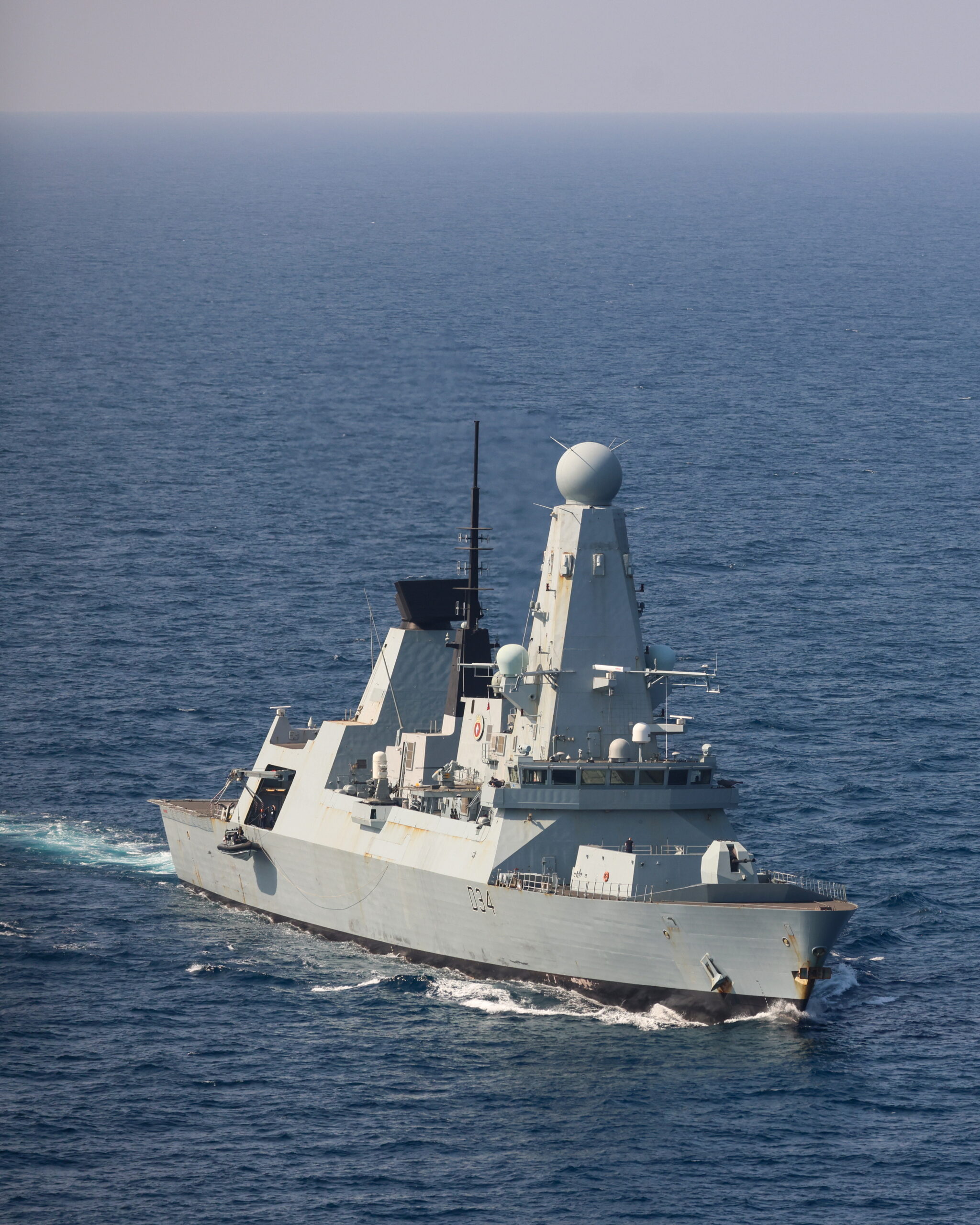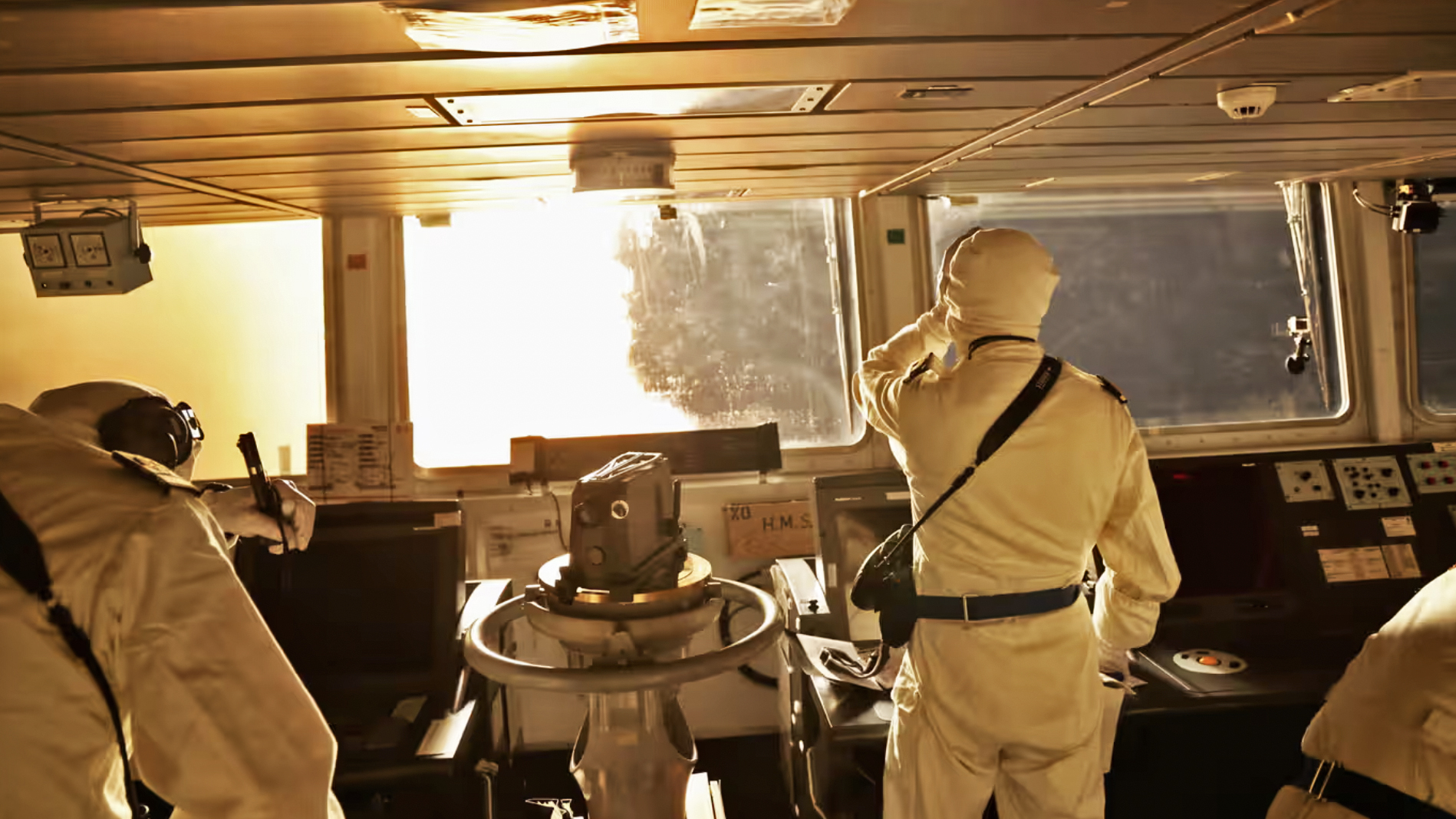Yemen’s Iran-backed Houthi forces launched what has been described as their biggest attacks so far against shipping in the southern Red Sea last night, leading to U.S. and U.K. warships and fighters downed 21 drones and missiles. There are no reports of any damage or injuries in the aftermath of the attack, but it’s a clear indication of the high-stakes confrontation now being played out in this vital trade route.
U.K. Defense Secretary Grant Shapps said that it was “the largest attack by the Iranian-backed Houthis in the Red Sea to date.” A similar assessment has been provided by U.S. Secretary of State Antony Blinken, who described it as “the biggest attack” and that it was “aided and abetted by Iran, providing technology and equipment.”
The assault took place off the Yemeni port cities of Hodeida and Mokha, according to the private intelligence and security firm Ambrey, an organization that you can read about in more detail here.
Off Hodeida, Ambrey said that ships issued radio messages describing incoming missiles and drones, while warships in the area urged “vessels to proceed at maximum speed.”
The Hodeida incident was also recorded by the British military’s United Kingdom Marine Trade Operations (UKMTO).
Meanwhile, in the Mokha incident, Ambrey said that ships reported seeing incoming missiles, as well as at least one aerial drone, and several small vessels.
The U.S. Central Command (CENTCOM) described it as a “complex attack” and that the 18 one-way attack drones, two anti-ship cruise missiles, and one anti-ship ballistic missile were downed by F/A-18E/Fs from the aircraft carrier USS Dwight D. Eisenhower, as well as by the Arleigh Burke class destroyers USS Gravely, USS Laboon, and USS Mason, and the U.K. Royal Navy’s Type 45 destroyer HMS Diamond.
CENTCOM said:
“This is the 26th Houthi attack on commercial shipping lanes in the Red Sea since Nov 19 … Vessels are advised to transit with caution and report any suspicious activity.”
According to Shapps, HMS Diamond likely also came under Houthi attack, with the defense secretary saying:
“My understanding is that both the ship itself potentially was targeted … but also that there’s a generalized attack on all shipping.”
Reportedly, HMS Diamond was responsible for shooting down seven of the 18 drones fired by the Houthis, using both Sea Viper air defense missiles and gunfire. The Sea Viper can be armed with the Aster 15 missile which has a range of around 18 miles for ‘inner layer’ defense and the Aster 30 tips which can engage long-range targets at more than 75 miles.
The gun aspect of the series of engagements is most intriguing as this would indicate that at least some of the drones got quite close to the ship before they were engaged. We still don’t know what gun system was used in the incident though.
In terms of guns, the Type 45 is armed with a single 4.5-inch Mark 8 main gun, two 20mm Phalanx close-in weapon systems, two DS30B Mk 1 30mm rapid-fire cannons, plus Browning .50-caliber heavy machine guns and 7.62mm general-purpose machine guns.
The U.K. Ministry of Defense issued a photo — seen at the top of this story — of HMS Diamond in action against the Houthi attacks, while U.K. Defense Secretary Grant Shapps provided the following statement:
“Overnight, HMS Diamond, along with U.S. warships, successfully repelled the largest attack from the Iranian-backed Houthis in the Red Sea to date.”

“Deploying Sea Viper missiles and guns, Diamond destroyed multiple attack drones heading for her and commercial shipping in the area, with no injuries or damage sustained to Diamond or her crew,” Shapps added.
“The U.K., alongside allies, have previously made clear that these illegal attacks are completely unacceptable and if continued the Houthis will bear the consequences. We will take the action needed to protect innocent lives and the global economy.”
In an official statement, the Houthis said:
“With the help of God Almighty, the naval forces, the missile force, and the unmanned air force of the Yemeni Armed Forces carried out a joint military operation with a large number of ballistic and naval missiles and drones, targeting an American ship that was providing support to the Zionist entity.”
The Houthi statement also describes the operation as an “initial response” to a December 31, 2023, U.S. attack that killed 10 Houthi militants.
On that occasion, U.S. Navy helicopters sunk three small Houthi boats after they fired upon and attempted to board a container vessel, leading to speculation that it could be a precursor to strikes on rebel targets in Yemen.
The statement continues:
“The Yemeni Armed Forces continue to prevent Israeli ships or those heading to the ports of occupied Palestine from navigating in the Arab and Red Seas until the aggression stops and the siege on our steadfast brothers in the Gaza Strip is lifted. The Yemeni Armed Forces confirm their full commitment to the continuation of shipping traffic in the Red and Arabian Seas to all destinations except the ports of occupied Palestine.”
Meanwhile, Mohammed al-Bukhaiti, a senior political official and spokesman for the Houthi rebels, posted on X that “The goal is not to sink or seize ships linked to Israel but rather to force them to use the ‘Road of Good Hope’ as an economic pressure card on Israel to stop the crimes of genocide in Gaza and lift the siege on its residents. This is a legitimate moral act, especially since we are in a state of war with it.”
Since the start of the Gaza conflict on October 7, 2023, the Houthis have launched multiple attacks against shipping in the southern end of the Red Sea and elsewhere. Initially, vessels targeted were said to be connected with Israel in one way or another, although, as the campaign has continued, these links have become tenuous or have disappeared entirely.
Approximately 15 percent of global maritime trade passes through these waters, although in response to the current threat some major shipping companies are now re-routing vessels via the Cape of Good Hope. This is a much longer route, with significant cost implications, too.

The latest Houthi attacks come ahead of a planned U.N. Security Council vote today, which would have potentially led to a formal condemnation of the rebels’ anti-shipping campaign and a call for an immediate halt to the attacks.
Until now, the Houthis have maintained that their campaign is directed against Israel, in response to its war on Hamas in the Gaza Strip.
Iran, meanwhile, as chief military backer of the Houthis, has also rejected calls from the United States and others to end its support for the rebels.
In the meantime, a U.S.-led coalition of nations has been patrolling the Red Sea to deter the strikes, or at least intercept incoming drones and missiles, as well as other potential Houthi threats. The War Zone was the first to report on the establishment of this task force, under Operation Prosperity Guardian (OPG). However, while more than 20 nations have joined OPG, only five — the United States, United Kingdom, France, Greece, and Denmark — have or will contribute warships. Singapore, which yesterday became the latest nation to commit to OPG, will also not be providing any warships.
With commercial vessels plying vital trade routes linking Asia and the Middle East to Europe now coming under increasing threat, there have been questions as to whether the United States and its allies may launch strikes against Yemen. So far, despite multiple warnings to the Houthis of “consequences,” these have not materialized.
The immediate response from Washington includes an announcement from the U.S. State Department that U.S. Secretary of State Blinken is to make an additional previously unannounced stop in Bahrain — also a part of the OPG coalition — during his tour of the Middle East. Previously, Blinken met Palestinian President Mahmoud Abbas in the Israeli-occupied West Bank, to discuss the ongoing crisis in the region.
This is a developing story. Stay with The War Zone for updates.
Contact the author: thomas@thedrive.com
